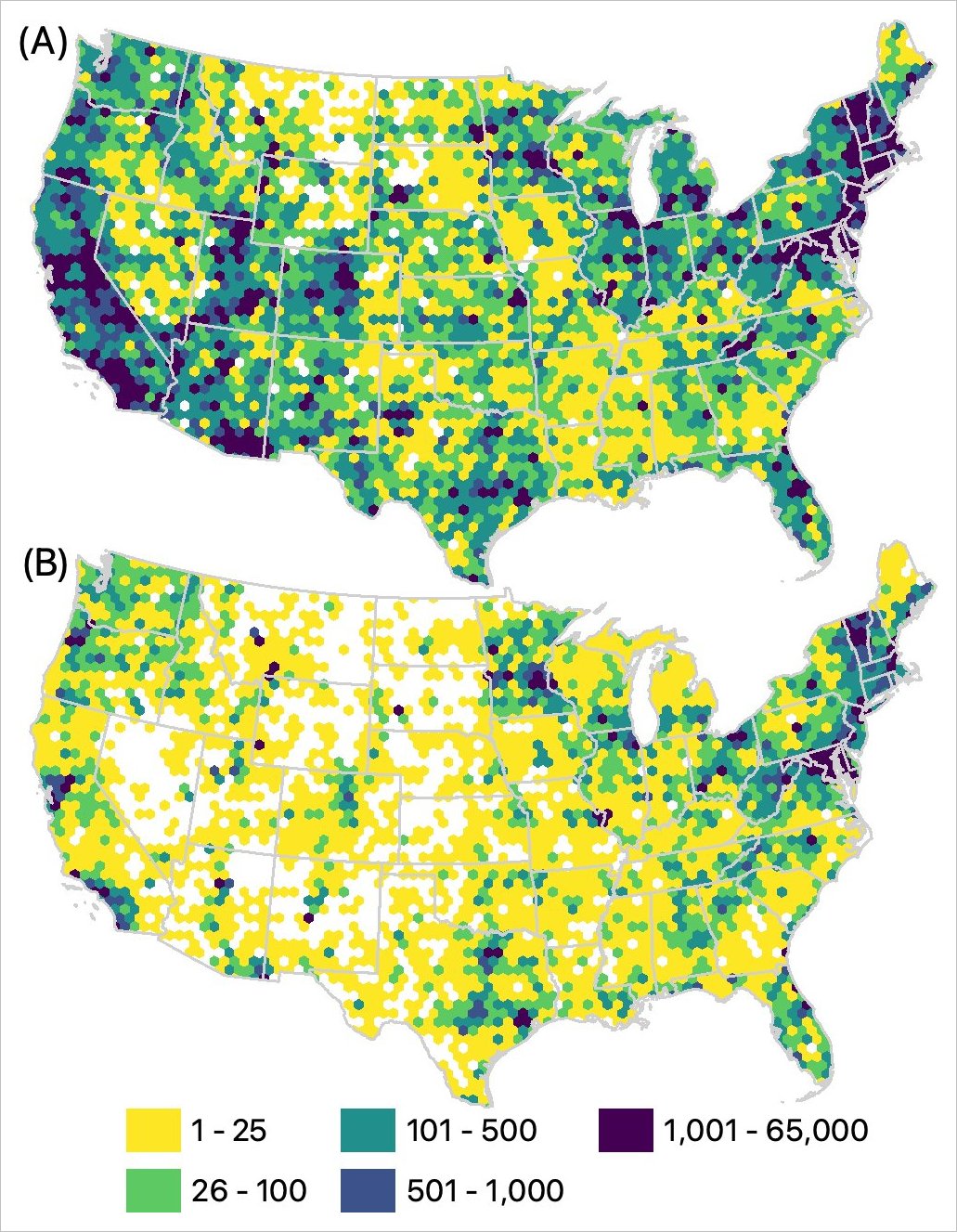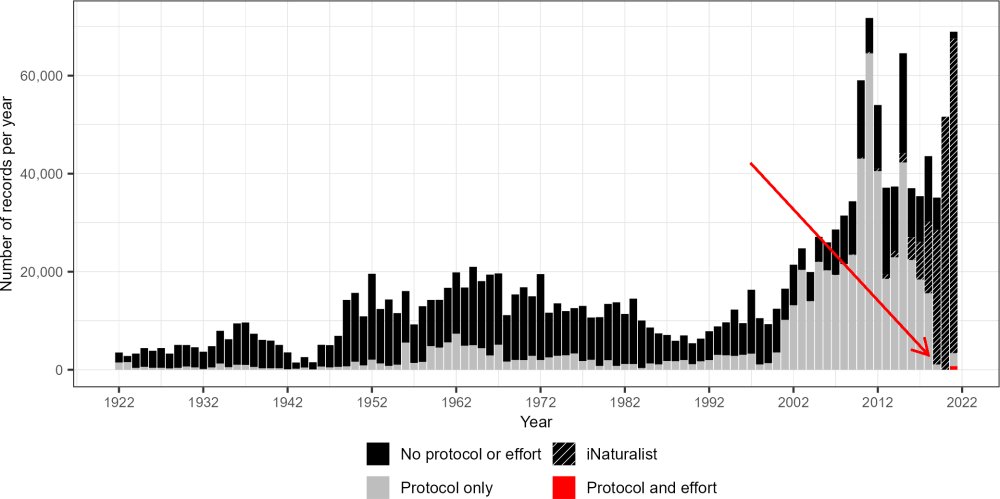What Do We Know About Wild Bees?
Overview
The U.S. has roughly 3,600 species of wild bees that pollinate thousands of plants, including many common foods like apples and almonds. Wild bees, along with many pollinators, are declining around the world due to land changes, human activities, pesticide use, and other threats. Despite growing concern about population declines, there are limited data about wild bees. Fortunately, we can use surrogate measures, sometimes called ‘ecological indicators’, to to guide conservation and outreach efforts until more bee data are available.
Populations of wild bees are declining around the world, with potentially disastrous consequences for ecosystems and agriculture. The situation is no different for wild bees in the U.S. Already nine bee species are protected under the Endangered Species Act, with at least five additional species being considered for listing. In some regions, over half of bee species are thought to be threatened. Many factors contribute to declines, but the primary causes are habitat loss and degradation, pesticides, and climate change.
Despite widespread concern and a growing community of scientists, managers, and naturalists interested in monitoring bees, we still lack sufficient data to assess the population status of most bee species. Why is there so little information? Bees are difficult to monitor because they are small, mobile, and hard to identify. Monitoring bee populations often requires specific survey methods, and there are few resources to support monitoring.
What Do We Know About Wild Bees in the U.S.?
The population status of most U.S. wild bees is unknown. Fewer than half of species have sufficient data to delineate their geographic range. Only about 600 of 3,600 species, or less than one-fifth of species, have been rigorously evaluated, and many of these are still found to be “Data Deficient” or “Unrankable.” In general, only species with very small ranges and known threats within those ranges are identified as imperiled.

Available Bee Records in the U.S.
These maps illustrate where bee records have been submitted across the U.S., shown in 25 km hexagon grid cells.
Map A: Total number of records available since 1700 (n=1,991,840). Very few of these records have sufficient information to be useful in conservation planning or evaluation.
Map B: Number of records from 2012 to 2021 (n=464,845). Even though the quality has improved recently, records still often lack sufficient details.

Number of Bee Records 1922-2021
Black Bars: Show records without protocol (trap type) or effort (duration and/or number of traps/volunteers)
Gray Bars: Represent records with only protocol information
Tiny Red Bar: Indicates complete records containing both protocol and effort information

Number of Species Sampled per State and Time Period
(A) Total number of species observed across all years (1700-2021), per state.
(B) The colors represent the number of species observed from 2012 to 2021, and the numbers overlaid on each state represent the percentage of the total number of species known from each state that were observed during the recent period. (Despite an exponential increase in the amount of bee data collected since 2012, over half of bee species have not been recorded in the last decade.)
Learn more about data availability and quality for U.S. bees in Rousseau et al 2024.
The Future
A broad network of scientists, managers, and naturalists – like the U.S. National Native Bee Monitoring Research Coordination Network – have been working hard to improve and expand monitoring efforts so that we can understand and respond to bee declines. Until the quality and quantity of bee data improve, ecological indicators can help to fill information gaps.
For more information about wild bee ecology, conservation, and monitoring, please visit the Xerces Society and the USGS Native Bee Lab.
Visit Cornell’s Pollinator Network to learn more about bee research and outreach at Cornell University.
